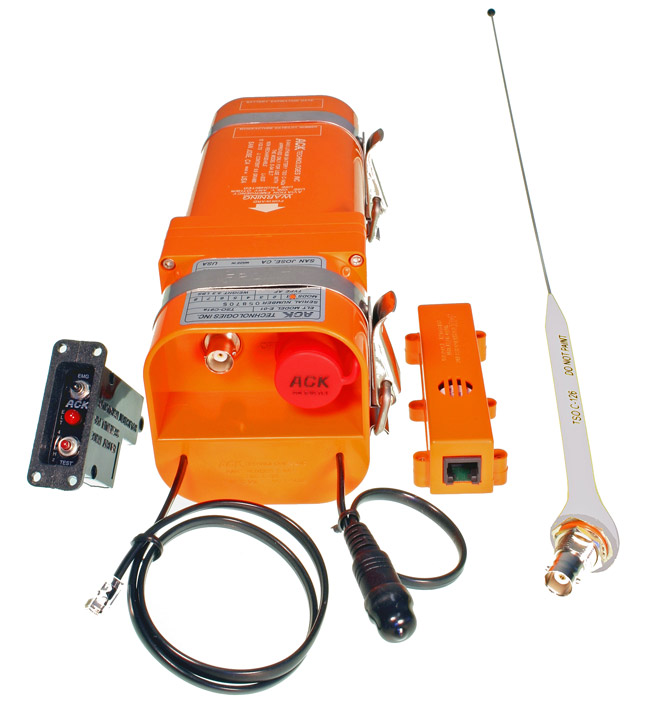Frugal Flier: A tipping point for 406 MHz ELTs
New technology is a compelling value
 A pair of events last year changed my mind about ELTs and spurred me to take a long-delayed action. First, in early December, a Beech Bonanza A36 with five people aboard disappeared from radar over a remote and rugged Idaho wilderness. An intense air and ground search was launched, but adverse winter weather hampered efforts to locate the missing airplane. A month later, no trace of the Bonanza or its occupants had been found, and the only ones still actively scouring the mountainous area where the airplane was last seen on radar were heartbroken family members.
A pair of events last year changed my mind about ELTs and spurred me to take a long-delayed action. First, in early December, a Beech Bonanza A36 with five people aboard disappeared from radar over a remote and rugged Idaho wilderness. An intense air and ground search was launched, but adverse winter weather hampered efforts to locate the missing airplane. A month later, no trace of the Bonanza or its occupants had been found, and the only ones still actively scouring the mountainous area where the airplane was last seen on radar were heartbroken family members.
Next, the ancient 121.5 MHz ELT in my own airplane went off while parked overnight in a hangar. I wouldn’t have noticed, but an alert airport neighbor tuned the emergency frequency on his handheld radio transceiver and heard the distinctive alarm.
The distress signal was faint, perhaps because it had been going off for some time without notice and draining the ELT battery. The battery was almost due for replacement, but I decided to upgrade to a modern 406 MHz ELT instead—and the cost of a new, more reliable, and far more accurate ELT ($559 for an ACK Technologies E-04 model) was far less than I had anticipated. Earlier generations of 406 MHz ELTs had topped $5,000 in 2009, and $2,500 in 2011. Now, they’re much more affordable.
Also, the installation itself was simple. The new ELT is exactly the same dimensions as the ACK E-01 it replaces, so it clips into the same bracket. There is a new antenna and a GPS connection, but the entire installation can be done in about one hour. Now, in the event of an accident, the ELT will broadcast its GPS position (and aircraft identity) with pinpoint accuracy.
ELTs became required equipment for general aviation aircraft in 1973 after congressmen Hale Boggs and Nick Begich perished in an aircraft accident in Alaska and the wreckage of their airplane was never found. ELTs, however—especially back then—were nearly worthless. They activated in fewer than 20 percent of accidents, and 97 percent of their signals were false alarms. In an effort to improve the ELT system, the U.S. government launched a satellite monitoring program. But after 27 years, that monitoring system was canceled in 2009 with little to show for it.
Today, digital technology has come up with a better solution—the 406 MHz ELT. It’s far more durable; sends fewer false alarms; and, best of all, it transmits GPS location and aircraft ID as well as a radio homing signal to rescuers. It is orders of magnitude more precise than its predecessors.
AOPA has long lobbied against new mandates for 406 MHz ELTs. The association believes informed pilots should be allowed to make their own choices about the equipment they buy for their airplanes. Now that the technology and reliability of new ELTs has been proven, however, and prices have fallen, 406 MHz ELTs are a compelling value. In my mind, the scales have tipped in favor of 406 MHz ELTs. (PLBs and satellite messengers are terrific, too, but survivors of an airplane accident may not be able to find or correctly operate them when it matters most.)
Pilots who choose to stick with the old 121.5 MHz ELTs certainly have the right to do so. They know the kinds of places they fly, and they can evaluate the risks. But pilots must know that their chances of being found after an accident in a remote area are exceedingly poor with old ELTs—and better safety equipment is widely available at reasonable prices. If the Bonanza lost over Idaho had been equipped with a 406 MHz ELT, chances are much greater that it would have been promptly found.
Email [email protected]
AOPA Frugal Flier coverage sponsored by Aircraft Spruce
Strategic partner member benefit
Enter promo code AOPAGH for a free hat with $99 Aircraft Spruce purchase. Excludes MRP Items.
Expires 3/20/2014


